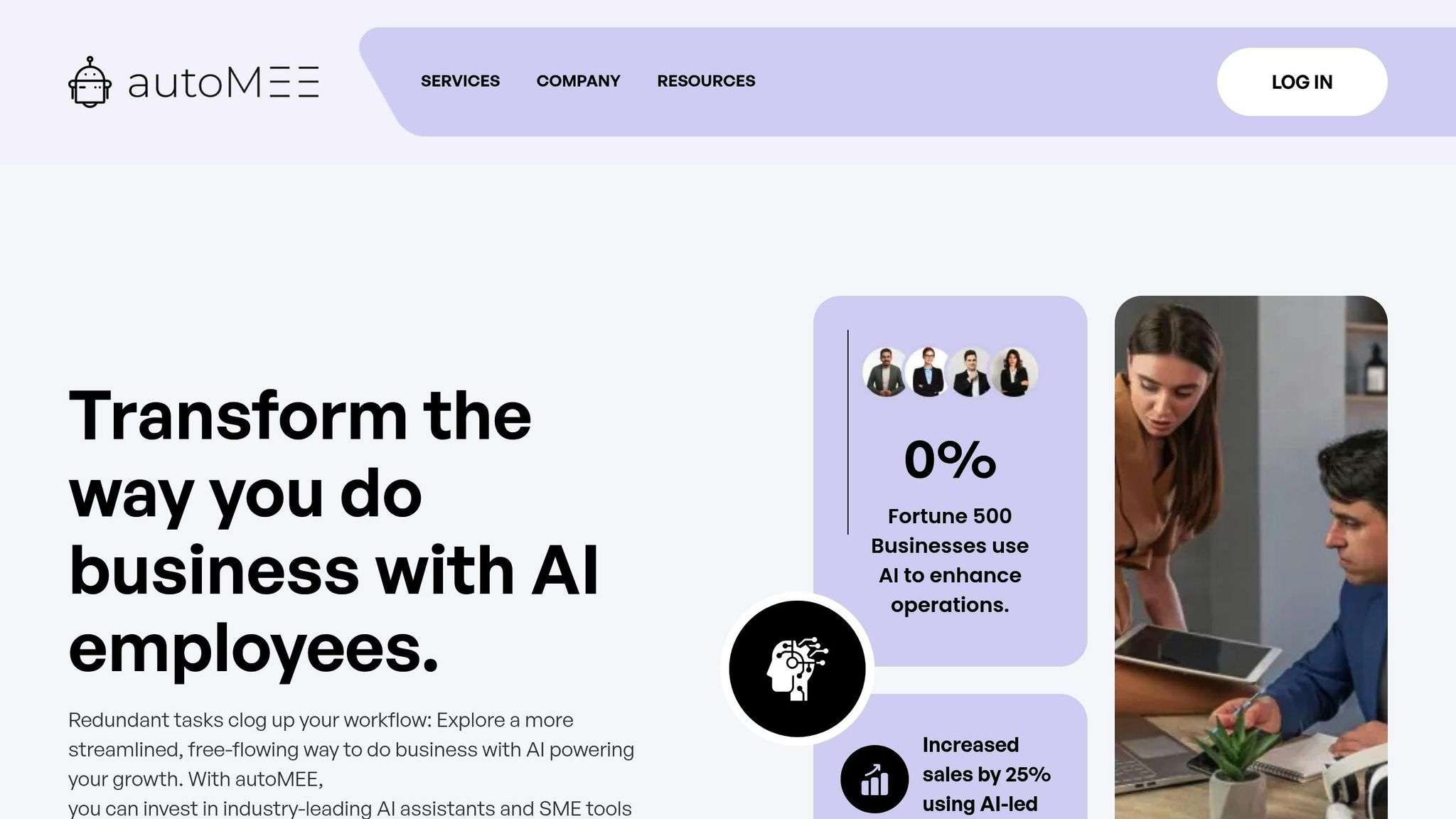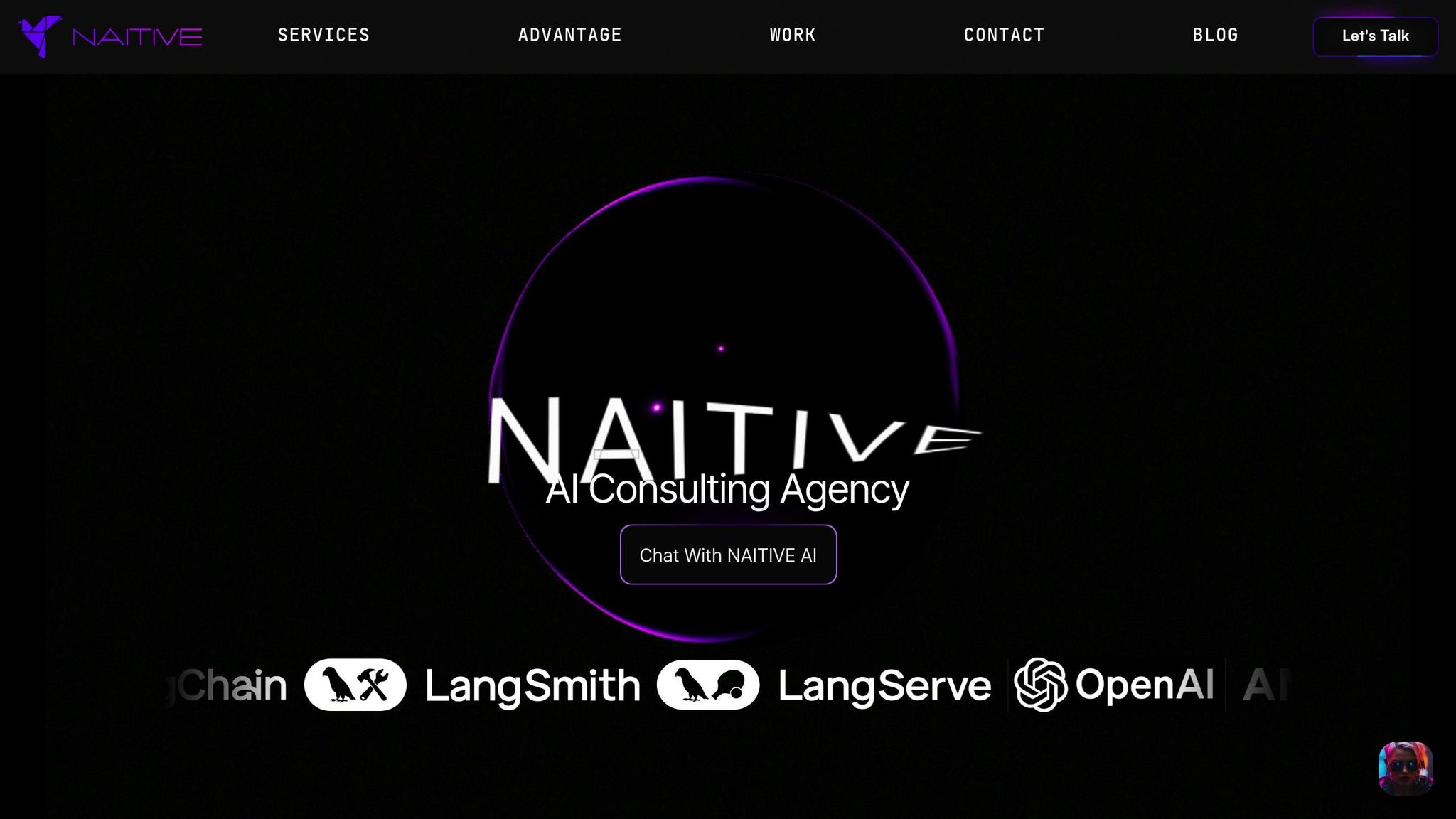Voice AI and Human Interaction: Case Studies
Explore how voice AI is revolutionizing customer interactions in healthcare, retail, and hospitality, enhancing efficiency and satisfaction.

Voice AI is transforming how businesses interact with customers, offering faster responses, 24/7 availability, and cost savings. This technology is widely used across industries like healthcare, retail, and hospitality to automate tasks, improve customer experiences, and boost efficiency. Here’s what you need to know:
- Healthcare: Voice AI helps schedule appointments, answer patient questions, and reduce administrative workloads. It has saved up to $1.5 million annually for some providers while improving patient satisfaction by 60%.
- Retail: Businesses use voice AI to recover abandoned carts, answer customer queries in real time, and personalize shopping experiences. Recovery rates have increased by 20–30%, and some companies report a 25% boost in sales.
- Hospitality: Hotels leverage multilingual voice AI to handle guest inquiries, reduce language barriers, and improve service quality. Results include a 43% drop in call volume and a 28% rise in guest satisfaction.
Voice AI combines speed, scalability, and cost-effectiveness, but it works best when paired with human agents for complex or emotional interactions. Companies using a hybrid approach report higher efficiency and customer loyalty. With ROI reaching up to 1,275%, voice AI is becoming a core tool for businesses aiming to enhance customer service and streamline operations.
How Voice AI Reduced Order Processing Time by 70% for a UK Food Supplier | Case Study | autoMEE

Healthcare: Improving Patient Engagement and Access
Healthcare providers are finding that voice AI is reshaping how they interact with patients. It’s not just about reducing administrative workloads - it’s about bridging communication gaps and making healthcare services easier to access.
Improving Patient Communication
Voice AI is stepping in to handle routine tasks like answering common questions and managing appointments, freeing up healthcare staff for more pressing matters. In fact, 72% of patients are comfortable using voice assistants for scheduling appointments and refilling prescriptions. This shows a growing acceptance of the technology among patients.
Even though many appointments and interactions (88% and 82%, respectively) are still managed by phone, voice AI is reducing the back-and-forth of multiple calls - an average of 2–3 calls per appointment. By automating scheduling, offering 24/7 support, and sending reminders, voice AI simplifies the process. Interestingly, 71% of Generation Z prefers resolving urgent issues via phone, highlighting the importance of seamless phone-based solutions.
Voice AI also enhances patient experiences by making interactions feel more conversational. 65% of healthcare consumers say they feel more comfortable and engaged with a conversational approach. These systems can adapt to individual patient needs, creating a more personalized connection between patients and providers.
For those with disabilities or mobility challenges, voice AI removes barriers to accessing healthcare. It eliminates the frustration of navigating complex phone menus or text-based systems, which is especially important for the 26% of U.S. adults living with a disability.
One notable example is WebMD’s integration with Alexa, which allows patients to ask questions like, "Hey Alexa, what are the symptoms, causes, and treatments for disease X?". This provides instant access to reliable medical information.
Voice AI also supports telemedicine by guiding patients through virtual appointments and enabling remote consultations. During times when in-person visits were limited, this technology ensured patients could still receive care through remote monitoring and regular check-ins, particularly for those at higher risk.
These communication advancements aren’t just about convenience - they translate into real operational benefits.
Measurable Benefits
Healthcare organizations that implement voice AI are seeing major gains in efficiency and patient satisfaction. For example, a mid-sized health system with 11 hospitals and 68 clinics reported saving 6,070 agent hours monthly and $1.5 million annually. Another system reduced staff workloads by nearly 18 weeks within its first month, handling over 15,000 routine tasks and verifications.
Voice AI also speeds up administrative processes. Healthcare providers report up to a 30% reduction in manual processing times, allowing staff to dedicate more time to direct patient care.
The impact on patient satisfaction is equally striking. Voice AI solutions in healthcare improve productivity by 40% and boost customer satisfaction by 60%. This combination of operational efficiency and improved patient experience makes voice AI a valuable tool for healthcare providers.
Clinical documentation is another area where voice AI shines. Voice-enabled documentation could save U.S. healthcare providers around $12 billion annually by 2027. At Cedars-Sinai Medical Center, introducing voice-controlled personal assistants led to a 60% reduction in medication error risks. Before this, nurses faced 14 interruptions per hour, consuming 22% of their work time.
The adoption of voice technology continues to grow. By 2026, 80% of healthcare interactions are expected to involve voice AI. Investment in AI-powered medical note-taking apps reflects this trend, with funding jumping from $390 million in 2023 to $800 million in 2024.
Patient experience metrics also highlight the benefits. 93% of patients report a better experience when healthcare providers use AI-assisted documentation and workflow tools. One implementation saw efficiency improve by 46%, with clinicians reducing their working hours by an average of 44 hours per month within six months.
Voice AI addresses a core issue in healthcare: communication. While only 4% of patient complaints are about the quality of care, a staggering 96% relate to poor communication, administrative hurdles, and long wait times. By streamlining these non-clinical aspects, voice AI tackles the main sources of patient dissatisfaction head-on.
"There's no question that the healthcare industry has room for growth in adopting AI-powered communications to improve the relationship with their patients. Technology can help personalize communications across various channels and socio-demographic profiles. Collaboratively, we can break down the barriers that exist to showcase how transformative these solutions can be to improving the patient-provider relationship." - Vijay Verma, TeleVox's VP of Product Strategy
Retail: Increasing Sales and Reducing Abandoned Transactions
Retailers face a tough reality: cart abandonment rates linger at around 70% across industries. This means that out of every 10 customers who add items to their carts, only 3 actually complete their purchases. Voice AI is stepping in as a game-changer, offering a way to reclaim these lost sales while enhancing customer engagement.
Voice AI doesn’t just stop at sending follow-up emails. It creates real-time, personalized conversations that address customer concerns on the spot, helping turn potential buyers into paying customers.
Personalized Voice AI for Cart Recovery
Voice AI agents bring a fresh approach to recovering abandoned carts. They engage customers in natural, meaningful conversations by analyzing shopping behaviors, pinpointing why carts were abandoned, and tailoring recovery campaigns to feel personal rather than generic. This method has shown impressive results, with recovery rates jumping 20–30% higher compared to email-only strategies.
These AI-driven conversations go beyond surface-level interactions. For example, they can help clarify product details, resolve sizing questions, or even offer dynamic discounts to encourage purchase completion - all in real time.
Nordstrom provides a great example of what’s possible. After integrating an AI-powered sales platform, the company saw a 25% boost in sales from targeted customers, a 30% rise in customer satisfaction, a 50% increase in outbound calls, and a 20% improvement in response rates. What’s more, AI agents can manage countless customer interactions simultaneously without increasing staffing costs.
Customer expectations are also a driving force behind the adoption of this technology. A staggering 71% of customers expect a response within 5 minutes, and 31% expect it within just 2 minutes. Voice AI meets these demands, delivering quick, personalized support that not only recovers abandoned carts but also builds stronger customer loyalty.
Impact on Revenue and Retention
Voice AI doesn’t just stop at recovering carts - it also plays a key role in boosting revenue and keeping customers coming back. Businesses that use advanced personalization strategies have reported conversion rate increases of up to 15%, along with higher average order values and better customer retention. For instance, companies using Dasha AI solutions have seen a 30% jump in average order value and a 40% boost in sales productivity by streamlining customer interactions.
The ripple effects on customer relationships are equally impressive. Research shows that 80% of shoppers are more likely to buy when they experience personalized service, and personalization in retail can drive sales growth of 6–10%. Businesses using AI-driven personalization have reported a 25% increase in marketing ROI, a 20% uptick in sales, and doubled customer engagement rates. Additionally, this technology has been linked to a 28% reduction in customer churn, with 62% of customers more likely to become repeat buyers when they receive personalized service.
Major brands are already reaping the rewards. Nike, for example, achieved a 25% higher click-through rate on personalized emails compared to generic campaigns. By focusing on AI-driven digital engagement, Nike’s digital sales have doubled over three years, and its membership program has seen significant improvements in customer retention. McDonald’s also embraced AI when it acquired Dynamic Yield in 2019, using the technology to personalize digital menu boards at drive-thrus and kiosks. The system factors in details like time of day, weather, restaurant traffic, and past purchase history to suggest menu items most likely to resonate with customers.
"The ability to segment customers and deliver personalized experiences is a game-changer for marketers." – Marc Benioff, Salesforce CEO
These advancements align with shifting customer preferences. A full 75% of customers now prefer personalized interactions, and nearly half (47%) want AI to deliver personalized deals. Voice AI meets these expectations by providing both the scale and efficiency that traditional methods simply can’t match.
It’s no surprise that businesses are taking notice. Emily Thompson, CEO of Company Z, shares her experience:
"Dasha AI has revolutionized the way we engage with our customers. The AI agents are incredibly lifelike, and our prospects are often amazed when they find out they were talking to an AI. The personalized recommendations have significantly increased our conversion rates, and we couldn't be happier with the results."
With results like these, it’s clear why 61% of businesses plan to increase their investment in AI-powered customer service.
Hospitality: Improving Guest Experiences with Multilingual AI
Language barriers are more than just an inconvenience - they're a costly challenge for the hospitality industry, draining approximately $2.3 billion annually. Studies reveal that 73% of international guests experience frustration due to communication issues, and hotels lose about 18% of potential bookings because of phone communication problems.
Voice AI is changing the game for hotels. Today, 78% of hotels use voice-activated devices, and 82% of travelers express a preference for AI-driven personalization.
Multilingual Support for Global Travelers
Multilingual voice AI is a game-changer for bridging communication gaps that have long disrupted guest experiences. These systems go beyond simple translations, handling routine inquiries, processing service requests, and escalating complex issues - all while maintaining the context of conversations and respecting language preferences. Acting as more than just a translator, voice AI captures cultural subtleties, ensuring guests feel genuinely understood.
The results speak for themselves. Village Hotels, with 32 locations across the UK, saw remarkable improvements after implementing voice AI: a 43% drop in front desk call volume, $180,000 saved in annual staffing costs, a 28% rise in guest satisfaction scores, and a 15% increase in direct booking revenue. Similarly, The Gale South Beach climbed 40 spots on TripAdvisor rankings in just six months, achieved a 34% boost in repeat bookings, reduced guest complaint resolution time by 25%, and saved $120,000 annually by eliminating outsourced translation services.
A Four Seasons property in Maui provides another compelling example. Catering to a diverse clientele (34% Japanese, 28% mainland US, 18% European, 12% Chinese, 8% other), the hotel integrated Qcall.ai, leading to a jump in guest satisfaction scores from 9.1 to 9.7, a 52% improvement in staff efficiency, and an additional $340,000 in annual revenue through better service upselling.
"Voice assistants are not just a convenience; they're a necessity in today's fast-paced hospitality environment."
- John Peterson, Senior Analyst, Forrester Research
These examples highlight how multilingual voice AI not only enhances guest experiences but also boosts operational efficiency.
Operational Benefits and Higher Guest Satisfaction
Hotels adopting multilingual voice AI report significant gains across the board. Properties have seen a 40% rise in guest satisfaction, a 67% drop in language-related complaints, and a 25% increase in revenue. These improvements are especially critical when 31% of international guests abandon booking calls within 90 seconds due to language difficulties, and language-related complaints make up 34% of all negative reviews.
One budget chain with 47 properties used Qcall.ai to automate 80% of inquiries, cutting night shift staffing by 34% while maintaining an 8.2 guest satisfaction score - allowing for market expansion without increasing staff. In another case, a business hotel near financial districts integrated multilingual voice AI into its corporate travel systems, leading to an 89% contract renewal rate, a jump in Net Promoter Scores from 51 to 73, and a 23% increase in revenue per available room.
"Implementing voice technology at our front desk transformed our check-in process - guests love the quick, hassle-free experience, and our team can focus on delivering personal service."
- Debbie, Department Manager
This technology also addresses staffing challenges. With 60% of hospitality workers being non-native English speakers - particularly in roles like housekeeping - communication gaps often lead to a 23% increase in staff turnover. Multilingual voice AI helps bridge these gaps. For example, a luxury hotel in New York reduced front desk wait times by 25% and boosted guest satisfaction by implementing voice-enabled check-ins. Additionally, Forrester Research found that AI-driven call center assistants improve response times and customer satisfaction by 30%.
Cost-effective pricing makes these solutions accessible for hotels of all sizes. Rates range from $0.17 per minute for boutique properties to $0.07 per minute for larger chains. With AI adoption in the hospitality sector projected to grow at an annual rate of 25.1% from 2023 to 2030, hotels that delay implementing multilingual voice AI risk being left behind in an increasingly competitive market.
Current Trends in Voice AI
Voice AI is evolving rapidly, moving beyond basic commands to interpret emotions, operate independently, and address accessibility challenges. These advancements are transforming how businesses engage with customers and creating new opportunities for collaboration between humans and machines. For instance, the global voice recognition market is projected to grow from $6.9 billion in 2020 to $27.3 billion by 2025. Building on its earlier benefits, voice AI is now entering new areas of customer interaction and engagement.
Emotional Intelligence and Sentiment Analysis
Today's voice AI systems are stepping up their game with advanced sentiment analysis, allowing them to understand not just the words being spoken but the emotions behind them. By analyzing tone, speed, and vocal patterns, these systems can tailor their responses to align with the emotional context of the conversation. Businesses using emotionally aware voice AI have reported a 25% increase in customer satisfaction, a 15% rise in conversion rates, and noted that 75% of users now expect these systems to pick up on emotional cues.
A great example is Motel Rocks, a fashion brand that in 2025 integrated AI-driven sentiment analysis into its customer service. This allowed their team to prioritize issues in real time, boosting customer loyalty. These systems can even adapt their tone, vocabulary, and pacing during interactions - for instance, slowing down and using empathetic language if frustration is detected.
"Voice AI represents the biggest paradigm shift in customer experience since the introduction of self-service portals. Companies implementing sophisticated voice agents are seeing triple-digit ROI while delivering the personalized, efficient service that today's consumers demand."
- Gartner Research, Customer Experience Technology Outlook 2025
This capability is also making waves in other fields. In healthcare, voice AI can detect stress or anxiety and provide additional support. In education, it adjusts teaching speeds to match a student's level of understanding, making learning more effective.
Autonomous Agent Teams
The rise of autonomous AI agents is shifting voice AI from being reactive to becoming proactive. These agents can handle complex, multi-step tasks with minimal human input. The artificial intelligence agents market was valued at $5.40 billion in 2024 and is expected to grow at an annual rate of 45.8% from 2025 to 2030. According to Gartner, 33% of enterprise software applications will include agentic AI by 2028, compared to just 1% in 2024.
The benefits are clear in real-world applications. In 2025, a major telecommunications company saved $28 million annually by using AI voice agents for tier-1 support, cutting interaction costs from $4.50 to just $0.75. Similarly, an e-commerce retailer managed a staggering 1,200% spike in Black Friday inquiries in 2024 without hiring additional staff, thanks to these AI agents. Healthcare providers like St. John's Health are also leveraging AI to streamline post-visit documentation, allowing doctors to receive summarized notes for better patient care.
"AI agents are not just tools of efficiency, but enablers of deeper human contribution."
- Gartner
In hospitality, brands are using AI agents to enhance guest experiences. Marriott uses an AI-powered system to provide personalized recommendations based on guest history, while Hilton employs robotic concierges and smart room technology to adjust lighting and temperature according to guest preferences.
Accessibility and Inclusivity
Modern voice AI is not just about efficiency - it’s also breaking down barriers for people with disabilities and those who speak different languages. These systems can understand natural, conversational speech and adapt to a variety of accents and dialects, making them more inclusive. With an aging population - by 2030, 1 in 6 people will be over 60 - there’s growing demand for technologies that simplify interactions for older users. These systems are becoming smarter and more context-aware.
Recent developments highlight this potential. In 2024, researchers at MIT and Brigham and Women's Hospital created a prosthetic leg that uses a neuroprosthetic interface for a natural walking gait. Meanwhile, Harvard Medical School and Boston Children's Hospital developed QuickPic AAC, an AI tool that generates relevant vocabulary displays to help users construct sentences. AI-powered hearing aids have also advanced significantly, analyzing up to 192,000 data points per second to improve sound quality and reduce background noise.
"When we design for people with disabilities, we all benefit."
- Satya Nadella, CEO of Microsoft
Voice AI is also addressing language barriers. In 2025, Vodafone saw a 35% increase in Net Promoter Scores after deploying voice AI agents capable of switching between 18 languages. This is particularly important as 60% of users now prefer interacting with brands in their native language. These systems can understand regional dialects, local expressions, and even adapt their vocabulary and pace to enhance communication. For individuals with speech disabilities, voice AI is becoming better at recognizing unique speech patterns, ensuring fair access to voice-activated services. These advancements not only broaden the scope of voice AI but also reinforce its potential to shape the future of human–machine interactions across industries.
Voice AI vs Traditional Human Interaction
Voice AI has made major strides, offering emotional intelligence and autonomous capabilities that continue to evolve. For businesses, the challenge lies in finding the right balance between AI and human agents. Drawing from earlier case studies, this comparison highlights the unique roles both play in customer interaction.
The differences between voice AI and human interaction go beyond just saving money. Each approach influences efficiency and customer experience in distinct ways. While some customers express frustration with automation, 80% of companies already use AI to enhance customer interactions.
Key Metrics Comparison
Voice AI and human agents perform differently across various operational metrics, as shown below:
| Metric | Voice AI | Human Agents | Key Difference |
|---|---|---|---|
| Response Speed | Instant responses; 37% faster first-response times | Variable; depends on availability and queue times | AI offers immediate engagement |
| Availability | 24/7 continuous operation | Limited to scheduled working hours | AI removes time zone constraints |
| Cost per Interaction | Around $0.01 per interaction, $0.08 per minute | Approximately $0.60 per minute | AI reduces costs by 80-90% |
| Scalability | Handles thousands of inquiries at once | Limited by the number of agents available | AI scales instantly during peak demand |
| Personalization | Data-driven customization using past interactions | Empathy for individual needs | AI relies on analytics; humans rely on empathy |
| Multilingual Support | Instantly switches between languages | Requires multilingual staff or translators | AI overcomes language barriers |
| Complex Problem Solving | Struggles with nuanced problems | Excels at empathy and trust-building | Humans handle emotional complexity better |
| Consistency | Delivers uniform responses | Performance varies by individual | AI ensures consistent service quality |
These metrics explain why many companies opt for a hybrid model, blending AI's efficiency with the empathy of human agents.
Businesses report up to 30% cost savings and a 52% faster ticket resolution rate when using AI. These improvements allow human agents to focus on high-value tasks that demand emotional intelligence and problem-solving skills.
Despite the advantages of AI, human agents shine in complex or sensitive situations. Research shows that 75% of customers prefer speaking with a human for emotionally charged issues. This preference highlights the importance of hybrid strategies that combine the strengths of both AI and human interaction.
For example, SuperAGI implemented emotionally intelligent voice AI, resulting in a 25% increase in positive reviews, a 30% drop in negative feedback, and a 40% reduction in escalation rates. Operationally, companies using AI have reduced staffing needs during peak seasons by 68%, allowing human agents to focus on tasks that require empathy and creativity.
Data makes it clear: AI and human agents are not competitors but collaborators. Organizations that succeed in customer service see these two approaches as complementary. By combining AI's speed and availability with human expertise in relationship-building, businesses can deliver a well-rounded customer experience.
Voice AI and human agents each play vital roles in modern customer service. Together, they balance efficiency, cost-effectiveness, and availability with the empathy and ingenuity needed for more complex customer interactions. The most effective strategies leverage the strengths of both.
Conclusion: Voice AI Implementation with Expert Consultation
The examples from healthcare, retail, and hospitality highlight how voice AI is reshaping customer interactions. By cutting processing times by up to 75% and reducing service costs by as much as 30%, businesses are seeing real impact. For instance, Jumia reported a 76% increase in customer satisfaction within just three months of adopting AI-powered customer service, while Deutsche Bahn managed to slash case handling time by 49% through its voice AI platform. These results make it clear: voice AI offers both financial and operational advantages that businesses can’t afford to overlook.
The Business Value of Voice AI
Voice AI doesn’t just save money - it adds value across the board. Companies are seeing returns of $3.50 for every $1 invested, with some achieving ROIs as high as 1,275%. Interaction costs, which typically range from $5–$25, drop dramatically to just $0.50–$5. For most businesses, the investment pays off within 4 to 8 months. Beyond the numbers, voice AI helps companies gain a competitive edge. Businesses using AI for retention strategies report a 30% reduction in customer churn, and 55% of organizations see an increase in high-quality leads after deploying voice AI solutions. But to fully realize these benefits, expert guidance is key.
Partnering with NAITIVE AI Consulting Agency

Achieving success with voice AI requires more than just technology - it demands precise planning and seamless integration. That’s where NAITIVE AI Consulting Agency comes in. With a proven track record in industries like healthcare, retail, and hospitality, NAITIVE specializes in designing and managing advanced AI solutions, including autonomous and voice agents, to deliver measurable outcomes.
Their approach ensures that voice AI aligns with a company’s specific needs and goals. By integrating AI solutions with existing systems, NAITIVE helps businesses deliver personalized, efficient customer experiences. Their expertise spans every stage of the process: from strategic planning and AI development to ongoing support and optimization based on real-world data.
What sets NAITIVE apart is their depth of technical knowledge. They don’t offer one-size-fits-all solutions. Instead, they create autonomous agent teams capable of handling complex tasks and voice agents that sound indistinguishable from human representatives. With Gartner forecasting that over 80% of customer interactions will involve AI tools, businesses need a partner like NAITIVE who understands both the technical and strategic aspects of voice AI.
The case studies make one thing clear: businesses that take a strategic, well-guided approach to voice AI will unlock its full potential. With NAITIVE’s expertise, companies can ensure smooth implementation, continuous improvement, and the flexibility to adapt as their needs evolve - leaving competitors relying on generic solutions in the dust.
FAQs
How does voice AI improve communication and engagement in healthcare?
Voice AI is reshaping healthcare communication by enabling real-time conversations that overcome language barriers, helping patients and providers communicate more effectively. Beyond that, it takes care of routine tasks like scheduling appointments, sending reminders, and managing follow-ups. With its 24/7 availability, patients can access essential services anytime, while healthcare teams experience less administrative strain.
This technology paves the way for more tailored care, improved appointment adherence, and greater patient satisfaction. By simplifying communication and making services more accessible, voice AI contributes to a smoother, more patient-focused healthcare experience.
How does voice AI help retailers improve cart recovery and create personalized shopping experiences?
Voice AI is transforming how retailers tackle cart abandonment while boosting customer satisfaction. By delivering personalized shopping experiences, it offers tailored product suggestions, provides real-time assistance, and sends proactive reminders to bring shoppers back to their abandoned carts.
This technology simplifies communication and ensures smooth customer support. The result? Higher conversion rates and stronger customer loyalty, thanks to its ability to create engaging and efficient interactions.
How does multilingual voice AI enhance guest experiences and streamline operations in the hospitality industry?
Multilingual voice AI is reshaping the hospitality industry by providing real-time, personalized support in various languages. This technology bridges language gaps, making communication smoother and more tailored to each guest's preferences, which helps guests feel genuinely understood and appreciated.
Beyond enhancing guest experiences, it also streamlines day-to-day operations. Tasks like handling reservations, answering frequently asked questions, and managing check-ins can be automated, freeing up staff to concentrate on delivering exceptional, personalized service. At the same time, this reduces operational costs and allows businesses to scale more effectively. By incorporating multilingual voice AI, hospitality providers can simultaneously improve guest satisfaction and operational efficiency.




